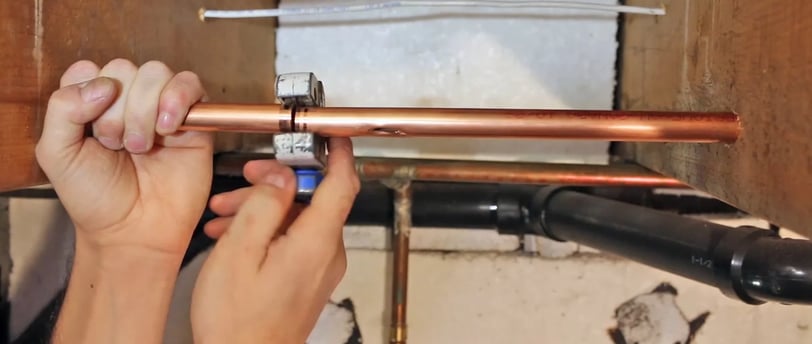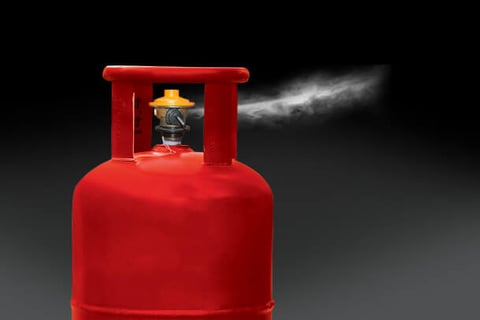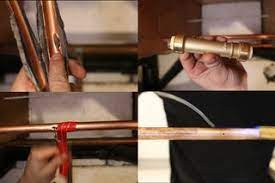What Are the Safety Checks After Gas Pipeline Installation?
Regular safety checks are essential to guarantee the proper functioning of the system and to prevent potential hazards such as leaks or pressure issues.
11/4/20244 min read


When it comes to ensuring a safe gas pipeline installation, the process doesn't end once the pipes are in place. Regular safety checks are essential to guarantee the proper functioning of the system and to prevent potential hazards such as leaks or pressure issues. In this blog, we will outline the crucial safety checks that should be conducted after the installation of a gas pipeline in your home, villa, or apartment.
1. Leak Detection Tests
After a gas pipeline installation, the first and most critical check is a leak detection test. This test ensures that no gas is escaping from the joints or valves, which can be a serious safety hazard. If any leaks are found, immediate repairs should be carried out to prevent gas-related accidents.
Why It’s Important: A small undetected gas leak can lead to severe consequences, including fire hazards or even explosions. Performing leak detection tests after installation guarantees your home is safe and secure.
2. Pressure Testing for gas pipeline installation for your Home
The next important check is the pressure test. This involves testing the pipeline's ability to withstand a specific pressure level without any issues. The system is subjected to high pressure, simulating normal and extreme usage conditions to confirm that the pipeline is durable and can operate without any pressure fluctuations or failures.
Why It’s Important: Pressure instability in a gas pipeline installation can cause inefficient gas flow or damage to the pipes. Ensuring that the system maintains stable pressure protects against potential malfunctions or accidents.
3. Valve Inspection
Every gas pipeline installation includes several valves that control the gas flow to different parts of your home. A thorough valve inspection is necessary to ensure they are working correctly. This includes testing the main shut-off valve, which allows you to cut off gas supply in case of emergencies, as well as any smaller valves throughout the pipeline system.
Why It’s Important: Properly functioning valves allow for easy control of gas flow and quick shutdown in case of emergency, protecting both your family and your property.
4. Gas Meter Calibration
An essential part of gas pipeline safety checks is verifying the calibration of the gas meter. The gas meter measures the amount of gas flowing into your home, so it needs to be accurately calibrated to ensure you’re not over- or under-paying for gas. More importantly, an inaccurate meter could be a sign of a faulty installation.
Why It’s Important: Accurate gas meter readings are crucial for safety and to ensure proper billing. Regular calibration checks prevent issues related to overconsumption or gas flow errors.
5. Inspection of Seals and Joints
Gas pipelines are installed with seals and joints that connect different sections of the pipe. After installation, a professional should inspect these connections to make sure they are secure and airtight. Even a minor issue with the seals can cause gas leaks, leading to serious risks.
Why It’s Important: Faulty seals and joints are a common source of gas leaks. Regular inspections ensure that all connections are properly secured to avoid potential hazards.
6. Carbon Monoxide Detector Test
For homes that use gas-powered appliances, installing carbon monoxide (CO) detectors is a critical safety measure. After the gas pipeline installation, ensure that these detectors are working effectively. These devices will alert you in case of a carbon monoxide buildup due to a gas leak or malfunctioning appliance.
Why It’s Important: Carbon monoxide is an odorless, invisible gas that can be lethal at high concentrations. A working CO detector provides an early warning system to protect your family from this danger.
7. System Purging
Purging the gas pipeline system is another important safety check. This process involves removing any air or contaminants that may have entered the pipes during installation. Ensuring that the system is free of impurities is vital to maintaining smooth and safe gas flow.
Why It’s Important: Purging eliminates unwanted air or debris that could cause the gas pipeline system to malfunction or reduce its efficiency.
8. Fire Safety Checks
After gas pipeline installation, it’s important to assess the proximity of the gas pipeline to potential fire hazards. Ensure that the pipeline is not too close to sources of high heat, open flames, or any other fire risks. Fire safety protocols should be in place, and emergency shut-off valves should be easily accessible.
Why It’s Important: Fire safety checks prevent gas pipeline installations from becoming ignition points for fires in your home, ensuring both personal and property safety.
9. Periodic Inspection Scheduling
Lastly, even after the installation and initial checks, it's important to schedule periodic inspections to keep your gas pipeline installation system functioning safely. Regular professional inspections will help identify any emerging issues before they become serious problems.
Why It’s Important: Gas pipeline installations require ongoing monitoring to maintain safety standards. Scheduling periodic inspections ensures your system remains efficient and safe over time.
for more info visit our website - https://vaultgaspipeline.site/




Contact US Today:
Email: info@vaultgaspipeline.site
Phone:
+91 8522 09 2525
+91 95155 92020


Quick Links:
Services
Our Process
Why Choose us
Contact us
Our Services:
Gas Pipeline Installation
Gas Pipeline Maintenance
